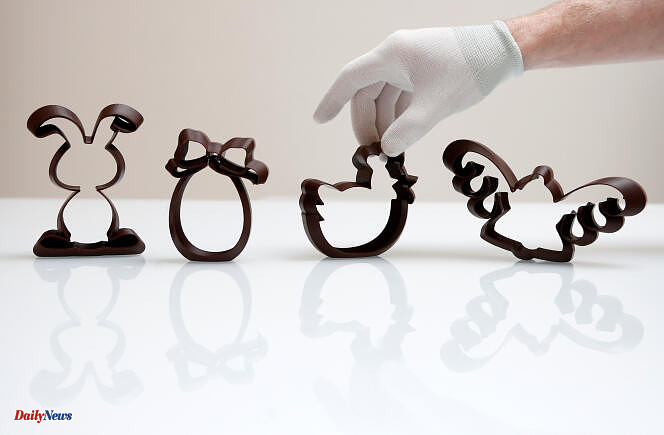Some say that it is the bells, others the rabbits, or even the casseroles, which bring the Easter eggs. In short, traditions vary depending on the region.
In the land of 36,000 bell towers, it could hardly be otherwise. In most of France, bells bring Easter eggs. Why this eccentricity, which we apparently share with the Dutch and Dutch-speaking Belgians (who call them Paasklokken)? Because we had to find an explanation for the silence that falls on our chiming nation for three days each year. “According to liturgical tradition, from Holy Thursday evening to Holy Saturday evening, the bells are silent,” explains Gérard Leser, historian and folklorist. This is the Easter triduum, the three days marking the passion and death of Christ before his resurrection. »
The bells would therefore take advantage of this brief technical unemployment to leave their belfry and fly to Rome. There, according to the versions, they would receive the blessing of the Holy Father, or else they would be remelted, before returning loaded with eggs and gifts, to the gardens and houses where the children stamp around on Sunday morning. Why eggs? Because they are a symbol of renewal, fertility and life. “Eggs have been part of the Easter liturgy since the 12th century,” assures Gérard Leser. Perhaps also, the historian suggests, because it was once forbidden to eat it during the forty days of Lent. However, if the bells stopped ringing, the chickens did not stop laying eggs: it was therefore necessary to force the omelette on Easter day to avoid spoiling it. Thus were born the meat pâté with eggs from Berry or even the fouace from Touraine. Until that blessed day when someone – a pastry chef, let’s bet – had the idea of making butter from these eggs by transforming them into chocolate.
A lexical preamble is necessary to avoid the faux pas when faced with lamb-flageolets. The Easter Bunny isn't everyone's bunny. " Attention ! There is an ambiguity about the term, warns historian and folklorist Gérard Leser. In Alsace, we say hàs, that is to say the Easter hare. The Swiss say rabbit. In English, we talk about Easter Bunny. » Let's move on to the latter, which could be translated as "Easter bunny", and which transforms a legendary animal into a lolcat. Let's also look at the Australian version of the story, in which the rabbit was replaced by a bilby, a kind of rat that spent too much time hanging from clothespins by its ears. The aim of the operation is to raise awareness in the country of the cause of this marsupial threatened by rabbits. Why not, if little Australians want to eat chocolate rats...
The hare and the Easter bunny do not proliferate. Their geographical influence has limits, which more or less draw the map of Protestantism. The legend was born in Germany, before spreading to the United States, the United Kingdom, as well as throughout central Europe, as far as Alsace and Moselle. A question arises that we have the right to ask ourselves if we haven't missed too many SVT classes. Why were mammals chosen to bring eggs to children, risking confusion in their young minds? Because the rabbit, which reproduces in spring, is the symbol of fertility, and therefore of life – pagan beliefs are never far away. “The first reliable historical mention dates from 1682,” reports Gérard Leser. We owe it to a German student, Georg Franck von Frankenau. In his thesis, he wrote that some parents talk to their children about Easter bunnies. » How can you not take seriously a thesis entitled De ovis paschalibus?
In some families, it seems, children are told that chickens lay Easter eggs. We will not dwell on such zaniness.












